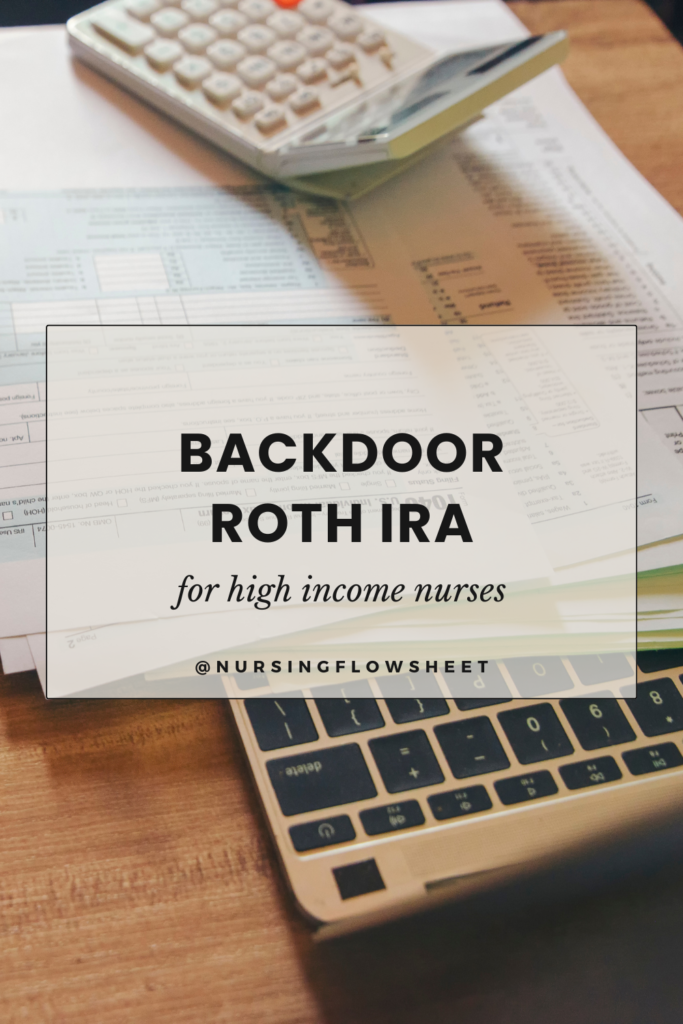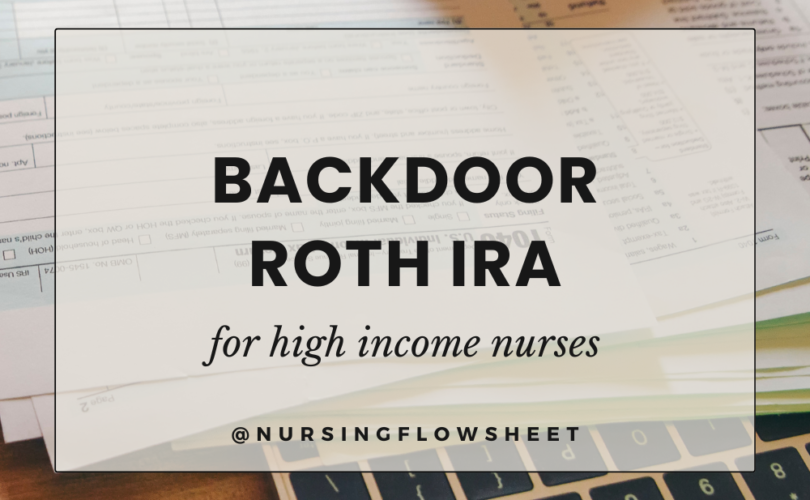As a nurse with a higher income, you may have heard about a financial strategy called the “Backdoor Roth IRA.” While it might sound complicated, this strategy can offer significant benefits in terms of retirement planning and tax savings. In this guide, we’ll break down what a Backdoor Roth IRA is, explore the tax implications, and provide you with a step-by-step instruction on how to execute this strategy effectively.

Understanding the Backdoor Roth IRA:
A Roth IRA is a retirement account that allows you to contribute after-tax money, and the earnings in the account grow tax-free. Unlike traditional IRAs or 401(k)s, Roth IRAs don’t offer an immediate tax deduction on contributions, but they provide tax-free withdrawals during retirement.
However, there’s an income limit for contributing directly to a Roth IRA. In 2023, for instance, if you’re a single filer and your modified adjusted gross income (MAGI) is over $140,000, you’re ineligible for direct Roth IRA contributions. This is where the Backdoor Roth IRA strategy comes into play.
The Backdoor Roth IRA Strategy:
The Backdoor Roth IRA strategy involves two main steps: making a non-deductible Traditional IRA contribution and then converting that contribution to a Roth IRA. Since there are no income limits for making non-deductible Traditional IRA contributions, this strategy allows high-income earners to indirectly contribute to a Roth IRA.
Tax Implications:
It’s important to understand the tax implications of the Backdoor Roth IRA strategy. When you convert the funds from your Traditional IRA to a Roth IRA, you’ll need to pay taxes on any pre-tax earnings in the Traditional IRA. If you have only after-tax contributions in your Traditional IRA, the conversion is tax-free. Therefore, it’s recommended to execute the strategy when your Traditional IRA doesn’t have substantial earnings.
Step-by-Step Guide to the Backdoor Roth IRA Strategy:
Step 1: Open a Traditional IRA: If you don’t already have a Traditional IRA, open one with a reputable financial institution. Ensure you choose a provider that offers low fees and a wide range of investment options.
Step 2: Make a Non-Deductible Contribution: Contribute the maximum allowed non-deductible amount to your Traditional IRA for the tax year. In 2023, the maximum contribution is $6,000 (or $7,000 if you’re age 50 or older). Keep records of your contribution for tax purposes.
Step 3: Wait for Settlement: It’s recommended to wait a few days or weeks for the contribution to settle in your Traditional IRA before proceeding with the conversion. This avoids any confusion about the source of the funds.
Step 4: Convert to Roth IRA: Contact your IRA provider and request a Roth IRA conversion for the funds you contributed to the Traditional IRA. You’ll need to complete the necessary paperwork for the conversion. Be prepared to pay taxes on any pre-tax earnings during the conversion.
Step 5: Report the Conversion: When you file your taxes for the year, report the conversion on IRS Form 8606. This form ensures that you’re not taxed again on the after-tax contributions.
Final Thoughts:
The Backdoor Roth IRA strategy is a smart move for nurses and other high-income individuals who want to take advantage of the benefits of a Roth IRA. While it involves a few extra steps and careful planning, the potential for tax-free growth and withdrawals during retirement can make a significant impact on your financial future. Always consult with a financial advisor or tax professional before implementing any complex financial strategies to ensure they align with your individual goals and circumstances.







[…] Income Limits: The Roth IRA income limits for 2023 are less than $153,000 for single tax filers, and less than $228,000 for those married, and filing jointly. If you make more than income limit, you can do a Backdoor ROTH IRA. READ: How to do A Backdoor ROTH IRA […]